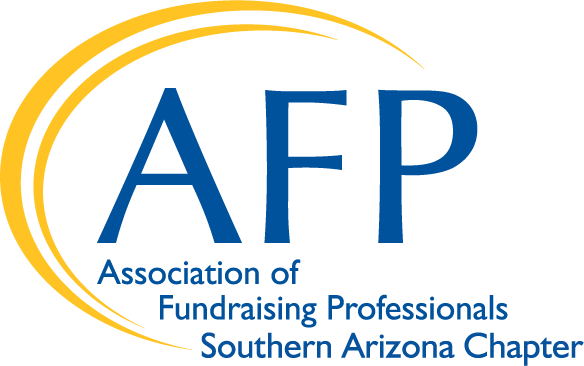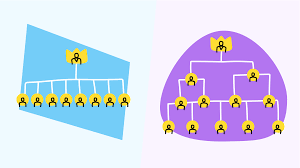Opinion by Yolie Contreras
(Note: This article original appeared on the Community-Centric Fundraising website. It is published here with the author’s permission.)
Let me just jump right into this and say that white people can’t seem to handle power that is evenly distributed. Why do I bring this up, you ask? Because I have never experienced such blatant white fragility as I have while working for a non-hierarchical, aka flat, organization.
What’s a flat non-hierarchical/flat organization?
In my experience, it seems that white people have a hard time coming to terms with power that is evenly distributed because they’re simply not used to that.
We are all familiar with how ‘standard’ businesses, organizations, and nonprofits typically operate. The structure usually resembles a pyramid — the base staff of employees start at the bottom, progress up in status until they reach the top, which usually consists of a CEO and/or executive team.
But what happens when a business or organization adopts a non-hierarchical or flat structure? Flat structures don’t have a pyramid — there are no levels of management, employees are part of the decision-making process, and everyone typically makes the same amount of money.
I am currently employed by an organization that adheres to a flat structure for employees. I’d like to add that we’re technically not a nonprofit since we utilize a fiscal sponsor, which is why we can probably get away with being a flat organization to begin with! Now, while this has mostly been an amazing experience, it has also brought up so many glaring instances of white supremacy and peak white fragility in a way that’s been unnerving.
In my experience, it seems that white people have a hard time coming to terms with power that is evenly distributed because they’re simply not used to that. I’ve seen them struggle with this because, let’s be real, white people are usually the ones in positions of power. In the absence of bosses, time and again, it’s the white people that try to step up and act like they’re the ones in charge. BIPOC have always been told that we are not the ones to lead, yet white people don’t seem to have any reservations assuming leadership roles. They seem to be unable to let go of traditional harmful practices because they want and need these power structures in place — because it directly benefits them.
White supremacy rears its ugly head
We all know the stereotypical (and severe) examples of white supremacy out in the world, but what a lot of people don’t realize is that it can also benignly manifest in the workplace. White supremacy within the workplace can show up as power-hoarding, micromanagement and perfectionism. (You can read more about white supremacy office culture here.)
Nonprofits and flat organizations are not above reinforcing this type of culture because, despite working for a non-hierarchical organization, I can tell you that I still experience intense bouts of white supremacy in the form of micromanaging, a constant sense of urgency, and boundary-crossing, among other things.
This was never more evident than when I came to work for my current organization, which is admittedly amazing, though not perfect. I thought I would be leaving the corporate, bureaucratic work culture behind, but I was completely stunned to find a lot of the same issues popped up in my shiny, new, flat organization. Let me break it down a bit for you:
I work in a small department of just two people. I was told when I started that everyone was treated equally and I wouldn’t have a boss. Boy was that so wrong.
When gathering together to make consensus-based decisions, the loudest and most forceful voices in the room would always come from the white people.
I could feel the familiar grasp of corporate hands tightening around my neck when I realized that my colleague, an older white woman, assumed that she was in control of the whole department. (It seemed that, at her last job, she was the department head, so at this current one, she was having a really hard time coming to terms with the fact that she was no longer the manager or the one in charge.)
I was constantly undermined, hounded after work hours, and told I couldn’t take time off. Tasks were being constantly delegated to me and always in a demanding way, never asked. It almost led to a mental breakdown — because of the stress, along with the fact that my hopes for an equitable utopia were dashed. It was another instance where, yet again, a white woman was exerting her dominance over me. That treatment (and so many other problematic instances), led to my flagship essay for Community-Centric Fundraising that goes into the harmful white practices that directly affect BIPOC.
When I expressed clear boundaries to this person, I was gaslighted and told it wasn’t a big deal. Or better yet, my boundary-setting resulted in typical white woman tears that were pretty much about how I was the evil brown girl coming after the well-meaning white woman.
How many of us BIPOCs have been told this or experienced this same scenario in our lives?
It was heartbreaking coming to terms with the fact that this job was turning into so many of my past jobs. And my colleague wasn’t the only one guilty of this behavior, either.
When gathering together to make consensus-based decisions, the loudest and most forceful voices in the room would always come from the white people. Almost every objection to change, complaints, and micromanaging have come from the white people within my organization.
The proverbial light at the end of the tunnel
This story does have a happy ending though. I have stayed and preservered. My former colleague is no longer a paid staff member, and I have begun the process of healing from that trauma. I am now able to foster a work environment that values rest so we can do what needs to be done.
My new colleague asked me a question when she first began that so clearly opened my eyes to what I had experienced. She asked, “How do you like to be communicated with?”
I have never been asked this question in my life. I have always been forced to comply with others’ ideas of communication.
We had a long discussion and agreed on many ways to ensure a peaceful work environment for the both of us. I knew my organization and I had turned over a new leaf.
Even if you do not work for a flat organization, I urge you to build the question of how you like to be communicated with into your work and your overall life.
The lesson here is that white supremacy, as always, is insidious. It invades pretty much every aspect of our lives and no institution, organization, or nonprofit is safe from it. BIPOC have to constantly navigate this in not only our personal lives, but also our work lives.
Okay, so we’ve talked about why white people seem to have issues with a flat organizational model — let’s chat about some of the benefits and drawbacks of this type of model.
Benefits of a flat organizational model
- It’s less stressful. Who would think that not having a boss or leadership board to report to would result in less stress? When someone isn’t constantly nipping at your heels, you can lean into your work to create meaningful change and results.
- It’s more transparent. All employees are involved in the decision making process and given more responsibility to be involved in important conversations.
- It’s more equitable. Typically, everyone will make the same amount of money so knowing that removes competition and makes work much more equitable for employees.
- It improves employee morale. It’s so freeing to be trusted to do your job without having to be micromanaged. Plus, if you need a day off, you just take it!
Disadvantages of a flat organizational model
- It can be murky. Sometimes it can be unclear who you should turn to when you need help or assistance.
- There can be power struggles. As I’ve previously detailed, in the absence of clear leadership, people will often take it upon themselves to assume those roles.
- Motivation may not always be there. There can be a lack of motivation since there are no raises or promotions (or other traditional benefits) to be attained.
- Decisions can take longer. Decision-making tends to take a lot more time since change within the organization needs to go through a group consensus process. So if you need something changed right away, that’s not going to happen!
The benefits of a flat organizational model far outweigh the disadvantages though. The way to navigate it is to learn to trust yourself and your instincts, to be comfortable with being open, and relying on others. In a flat organization, we can name what we need and feel without having to fear repercussions from upper management. Don’t get me wrong, flat organizations can be extremely challenging for those who have become accustomed to traditional hierarchies and power structures. However, I know that it is extremely worth it, especially for white people who need to let go of supposed power and learn to lean into a collective voice that gives BIPOCs an opportunity to flourish just as much as they do.
I think adopting a flat organizational structure is the future and one that every business and nonprofit should have. If we have to have jobs, why not make them more pleasant? This type of model is not perfect by any means, but it’s a step towards a more equitable future.

YOLIE CONTRERAS
Yolie Contreras (she/her) is a Salvi-Chicanx writer, fundraiser and zinester. She is currently based in Tucson, Arizona, although she was born and raised in Southern California. She believes that words and actions matter, and as long as systems of oppression exist, it is our duty to dismantle them. When she’s not working, Yolie spends her time hanging with her husband and their cat, knitting, and perfecting her Animal Crossing island. She can be reached via email or on Instagram @Yolie4u.

